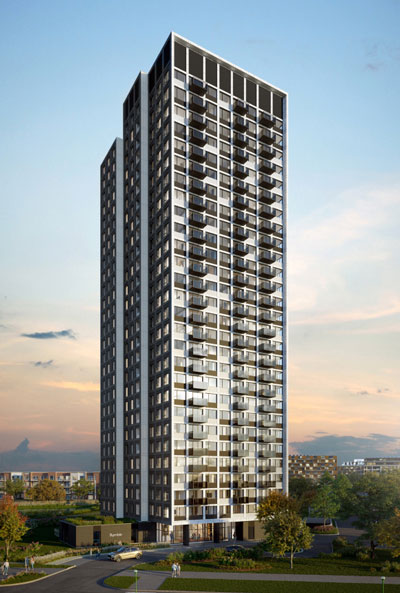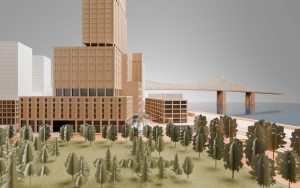The quiet city of Terrebonne, Quebec, northeast of Montréal on the St. Lawrence River doesn’t often make national headlines. However, two new innovative projects have put Terrebonne in the news as a green focal point in Quebec and beyond.
One is a proposal for an industrial park that could be the first of its kind in North America.
In 2021, the City of Terrebonne purchased two properties totalling 18 acres near a local landfill, hoping to encourage the development of a new industrial park that would not only bring jobs to the region but would operate under high environmental standards. The city began looking for investors willing to take on their vision.
The potential of the site, local talent pool and existing infrastructure caught the attention of Quebec furniture manufacturer and retailer Marimac Group. The company formed a joint venture with ecological and French environmental infrastructure experts the Tellos Group. Their proposal is one of several being considered by the city.
Tellos is an independent, family-run group operating in France and internationally, well known for its success at developing and managing a range of services for the building of cities and towns of the future.
If selected, the plan proposed by Marimac and Tellos is to model the Terrebonne park after Tellos’ breakthrough facility called Axioparc located near Strasbourg, France. It’s a very unique approach to industrial park development.

Axioparc goes beyond the mere providing of industrial space. Notably, social amenities complement the preservation of biodiversity and natural surrounds. In fact, one third of Axioparc is reserved for green space and relaxation areas, essential to making the park an attractive place to work.
There is also the objective to be as energy self-sufficient as possible.
For example, Axioparc has its own heating network powered by a biomass boiler room, large areas of solar arrays and a green hydrogen production facility for future use. Tellos calls Axoiparc, “a real economic lung in the region, a project which promises to breathe new life into the ambitions of entrepreneurs.”
Non-exclusive discussions between the City of Terrebonne, the Marimac/Tellos joint venture and other interested developers are ongoing regarding the operation of the park, allocation of space for industrial purposes and preservation of existing wetlands and forest areas at the site.
Selection of the developer and the design of the park could be complete this year, with occupancy as early as 2026.
The other green initiative is a 29-storey high-end rental apartment complex, first in Canada for its combination of LEED standards with the relatively new Zero Carbon Building certifications, in addition to several WELL certification criteria.
It rises on a prominent location near the junction of Highways 640 and 40 near the shore of the St. Lawrence.
Symbio Habitat Terrebonne was envisioned back in 2019 by Denis Tremblay, president of Développement FTG, and partner, financial analyst Étienne Chabot.
Key to the project is Maxime Frappier of ACDF Architecture. Frappier’s design of Haleco in Montréal was a winner in the 2019 Reinventing Cities international competition. Early in the project’s conception, Frappier brought in other accredited specialists in environmental certification and energy efficiency.
Material procurement meeting the various certification criteria while also being visually attractive has not been an easy task for the project team, Josée Lupien, president of Vertima, a pioneer in sustainable construction in Quebec, told local media.
In fact, building carbon-neutral, multi-residential buildings anywhere in Quebec is difficult due to seasonal temperature variations.
Materials were required to meet codes, of course. Paying strict attention to their low-VOC emission properties and thermal resistance, yet still being durable and relatively easy to build was also critical, while staying within budget.
Ivanhoé Cambridge, the real estate arm of the Caisse de Dépôt et Placement du Québec, and private investment company Claridge, are financing half of the $76 million project. The complex is expected to be completed in May 2024. Occupancy of rental suites ranging from studios to three-bedroom units will follow shortly after.
John Bleasby is a Coldwater, Ont.-based freelance writer. Send comments and Inside Innovation column ideas to editor@dailycommercialnews.com.




Recent Comments
comments for this post are closed